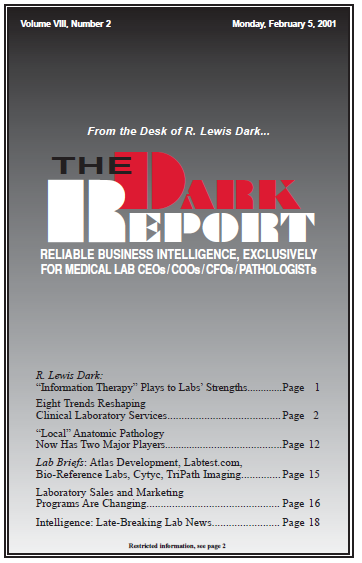CEO SUMMARY: After a lot of money and much effort, the fledgling crop of companies wanting to consolidate and manage pathology group practices has narrowed into just two market leaders: AmeriPath and Pathology Service Associates. These two companies could not be more different in their goals and operating philosophies. For local pathology groups, this is […]
To access this post, you must purchase The Dark Report.


